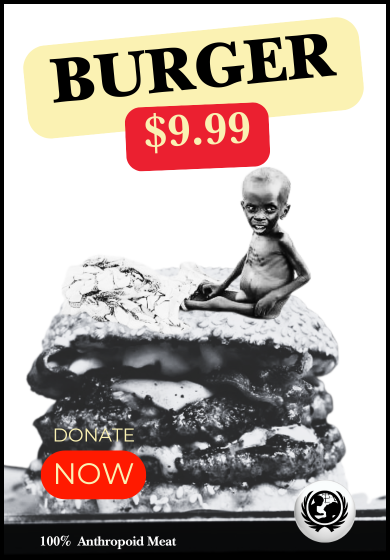It’s that time of year again, when the previous season starts to disappear into the rear-view mirror and the calendar ticks over with a new number at the end of it to kick off anticipation for the next campaign. So as we prepare to say goodbye to 2023, let’s reflect on each team’s strengths and weaknesses.

Glenn Dunbar/Motorsport Images
RED BULL
The good: Looking back at how I called last year’s level of performance “remarkable”, it’s astonishing that Red Bull has moved the goalposts so much further this time around. The car itself was extremely strong, but its true advantage was in its all-round abilities. Reliability was rock solid, pit stops were consistently rapid, strategy was on point and Max Verstappen exploited it all to the maximum in a stunning display of driver and team harmony.
The bad: There’s hardly anything you can put in this category this year, but perhaps Sergio Perez’s performances need more attention. Red Bull seems to think it can find ways of getting him performing more consistently, and while Verstappen stepped up another level, the Perez of the first few races was not the Perez of the majority of the rest of the season. Oh, and Singapore. One off weekend leaves a tiny bit of room for improvement.
RATING: 10/10

Dom Romney/Motorsport Images
MERCEDES
The good: Mercedes is one position higher up than it was a year ago, and that was built on a first part of the year where it was regularly the third-fastest car while other teams moved around more erratically. It also seemed to have a more comfortable Lewis Hamilton this year than last, and that translated into a tilt at second in the drivers’ championship that would have been a significant achievement if he’d pulled if off and gotten the better of a Red Bull.
The bad: Lessons weren’t learned with the car concept and Mercedes was no closer to Red Bull, admitting its faults immediately during the first race weekend. While Hamilton looked closer to his best, George Russell struggled more, and there wasn’t a victory for the first time since 2011. Fewer points resulted in second overall, and even that was due to the inconsistency of others opening the door more than Mercedes making gains.
RATING: 7/10

Zak Mauger/Motorsport Images
FERRARI
The good: This was a year when Ferrari actually showed some really positive signs, despite losing out to Mercedes in the end. Unlike 2022, the car got better as the year went on, and the team found more consistency as well as making fewer strategic errors. Carlos Sainz took an excellent win in Singapore and had a more consistent year than Charles Leclerc, but the latter had the majority of the team’s seven pole positions and looked back to his best in the final stages.
The bad: The first part of the season was not good, and Ferrari didn’t really kick on from last year’s platform initially – although managerial changes could have produced instability on that front. Reliability was also poor in a time of frozen power unit regulations, with two failures to start a race in the final six rounds ultimately costing it second place to Mercedes.
RATING: 7.5/10

Andy Hone/Motorsport Images
McLAREN
The good: Let’s be honest, the car development was pretty incredible, as McLaren went from being a regular Q1 casualty to fighting for podiums, pole positions and even being in the frame for victory on a few occasions. Pair that with another extremely strong season from Lando Norris and a hugely impressive first year from Oscar Piastri – including a Sprint win in Qatar – and there’s a lot of momentum behind Andrea Stella and his team.
The bad: To be blunt, where McLaren started the year was terrible, and suggests the team was not in a great place prior to the team leadership changes. There were still a few off weekends too, though not many, and the door was almost reopened to Aston Martin in the final few rounds. It would be unfair to cite a few qualifying mistakes from Norris as being overly costly, but tied to the odd bit of poor execution and there are areas to clean up on both sides.
RATING: 8.5/10

Jake Grant/Motorsport Images
ASTON MARTIN
The good: After a good year of development last year from a low starting point, it was a complete reversal in 2023. The car was excellent out of the box and transformed Aston into Red Bull’s nearest challenger early on, with Fernando Alonso in stunning form all year. To go from 55 points in 2022 to 280 this year – with eight podiums within that – is sensational progress over the entire period.
The bad: What that progress hides is the overall slide from competitiveness as the season went on. Of the eight podiums, six were scored in the first eight rounds, and the car’s performance did not always keep up with Alonso’s level. Lance Stroll also had a really damaging slump alongside the car struggles, without which Aston Martin would almost certainly have held McLaren off for fourth overall after enjoying such a head start.
RATING: 7.5/10

Glenn Dunbar/Motorsport Images
ALPINE
The good: There was a real balance to Alpine in the sense that its drivers were separated by just four points come the end of the season, and both Esteban Ocon and Pierre Gasly picked up a podium finish. Those standout results also came when the team’s back appeared to be against the wall amid upheaval or controversy, and the latter part of the season did see a largely more stable team.
The bad: A lack of stability at the very top from the start of the year led to pressure being cracked up very early on, and the position of Otmar Szafnauer becoming untenable. It still feels like the team lacks direction from Renault, with Pat Fry’s departure for Williams – citing a lack of ambition within Alpine to move higher than fourth – the perfect example of how that can be damaging. Far from being fourth, Alpine dropped a long way behind the top five and there were also too many retirements on its way to a distant sixth.
RATING: 4/10

Zak Mauger/Motorsport Images
WILLIAMS
The good: What a year it was for Williams, given where the team was coming from. Eight points in 2022 left it 27 away from the next team (AlphaTauri on that occasion), and appearing to be adrift of the rest of the field. So to finish seventh – its best result since 2017 – was a major step forward as it scored far more regularly, taking almost every opportunity. Alex Albon was the standout performer with 27 points on his own, but the arrival of James Vowles also appears to have given the team a clear direction.
The bad: Williams is still inconsistent and had a number of races where it was the slowest car too, something that was accentuated by a largely tough first campaign from Logan Sargeant. There were a lot of expensive crashes from the young American mid-season, although he ironed those out, and seventh would have been far more comfortably secured if he’d backed up Albon with more than a solitary point.
RATING: 8/10

Andy Hone/Motorsport Images
ALPHATAURI
The good: There was a strong turnaround from AlphaTauri that took it from clearly last to nearly winning the fight for seventh in the closing rounds. That was certainly helped by Daniel Ricciardo’s return, as he got closer to Yuki Tsunoda than either of the other two drivers that raced that car, but Liam Lawson’s stint was also a highlight. None of that should overshadow how impressive Tsunoda was though, scoring on six occasions to lead the team.
The bad: The car was a long way off early in the year, particularly in race trim, and Nyck de Vries struggled as a result. The Dutchman would almost certainly have performed better in the improved car, but it gave AlphaTauri a decision to make. A bit like Williams, inconsistency also hurt in the closing rounds, and as it prepares to rebrand it does feel like a team lacking identity – something new team principal Laurent Mekies and CEO Peter Bayer will look to address.
RATING: 6/10

Sam Bloxham/Motorsport Images
ALFA ROMEO
The good: We’re getting into the area where highlights are tougher to come by, but Zhou Guanyu continued his development and was even closer to Valtteri Bottas this year, providing Alfa Romeo with two drivers who could score if given a competitive car. While that was rare, an upgrade after the summer break did provide a stronger offering, as double points in Qatar showed.
The bad: Alfa Romeo feels like its in limbo, just as it returns to the Sauber name before later evolving into Audi. As exciting as the last part is, it feels like there’s a lack of immediate investment while waiting for Audi’s arrival, and that showed in a poor car this season. The partnership of Andreas Seidl and James Key also needs to show signs of building momentum next year after the McLaren turnaround since their departures for Hinwil.
RATING: 4/10

Zak Mauger/Motorsport Images
HAAS
The good: Nico Hulkenberg’s return was designed to give Haas more certainty in its driver line-up and it certainly did that, with excellent performances particularly in qualifying. Points in three of the first five races – split across both drivers – suggested a team taking its chances, and there was a commitment to a major mid-season upgrade that showed a bit more ambition than has perhaps been obvious in recent years.
The bad: That upgrade did not work, certainly not in performance terms compared to any of the Haas rivals that also updated cars during the year. That Hulkenberg reverted to the old spec when given the chance speaks volumes, while Kevin Magnussen was happier with the new car but that was because he was facing such a difficult season. Race pace and tire wear were both terrible, and it feels like old problems rearing their heads in a repeat of past Haas weaknesses. The big worry, though, might be the lack of any impression that serious investment is being put in to keep up with the rest.
RATING: 3/10



